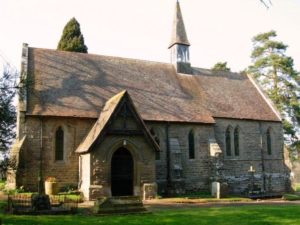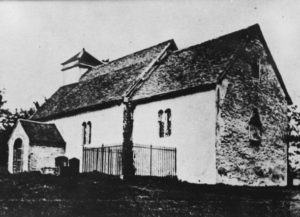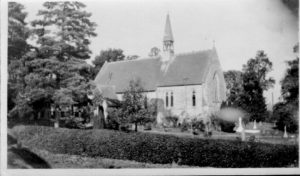Glazeley church
Welcome to the webpages of Glazeley Church. All are welcome to our church, whether to attend one of regular services or to simply visit. We serve the parishes of Glazeley and Deuxhill as well as parts of Chetton.
Sunday Services
We hold a communion service on the 3rd Sunday of each month, at 10.30am. There are additional services at Easter, harvest, Remembrance Sunday and Christmas. Our congregation is small but enthusiastic and we are noted for the quality of our refreshments after the service!
Clergy
Rector, Rev Mike Harris, c/o Highley Rectory, Church St., Highley, nr Bridgnorth, WV16 6NA, tel 01746 862837, email highleyrector@gmail.com
Assistant Curate, Rev David Poyner, 136, Hoo Road, Kidderminster, DY10 1LP, Tel 0121 204 3997/ 01562 68638, email d.r.poyner@aston.ac.uk
The Church
In Anglo-Saxon times, Glazeley and Deuxhill formed a single estate and although for much of their history they had separate churches, they were always closely linked. A priest is recorded in Glazeley in the Domesday Book, but church has been almost completely rebuilt on two occasions since then. The current building dates from 1873-5 (although quite possibly incorporating stone from earlier incarnations) and was designed by the architect Sir Arthur Bloomfield, a master of the Gothic revival style. The description below was written by the noted church historian Dean Cranage around 1900 and is still valid:
“The present building is an excellent example of a simple modern village church. It consists of a chancel, with an organ chamber and vestry on the north side, nave and south porch. The division between chancel and nave is marked internally by an open wooden screen, and externally by a Den fleche, covered with shingles. The style of the architecture is early Decorated, but the font is more of Early English character, with shafts and water-hollow bases. The glass of the east window and the wooden reredos are excellent”
The church retains the late Victorian woodwork and furnishings, which are fine examples of the this period. It also has a fine stained glass window in the chancel by Kempe, showing the adoration by the Shepherds. In the nave is a stained glass window as a memorial to Lt Philip Crook, killed in the First World War. It shows Philip and also his sisters.
In the sanctuary of the church is a memorial brass of 1599 with an engraving of Thomas Wylde (a former owner of the manor of Glazeley) and his wife. On the floor at the very back of the church is a memorial stone of 1695 to Edmund Wylde, a descendant of Thomas. Outside the church are two medieval fonts, one suggested to have come from Deuxhill church, a medieval stone coffin (possibly from the hall) and two medieval grave slabs. In the 19th century carvings were still visible on these but these are now almost completely worn away.
Translation of Wylde’s memorial stone: Edmund Wylde, of the Inner Temple, London, Esquire, son of Edmund Wylde, soldier, born at Houghton Conquest in the county of Bedfordshire on the tenth day of October in the year of our Lord 1618
A man both practitioner and patron of letters, for the skills in which he was steeped as a youth he developed as an adult and he supplied the rich resources in which he excelled to the learned
He visited many lands untiringly, observing nature and art, at the same time as he visited foreigners not forgetting his own, nor (if duty is worth anything) to be forgotten by them
For whatever celebrated model nature produced, whatever painting imitated Nature elegantly, whatever old age has marred or made venerable, this man amassed with generous industry, returning to his home with these outstanding spoils
He enriched himself and his country, as a discerning and fortunate connoisseur
But he was not more distinguished for his learning than for his familial duty, since the keenness with which he took his relatives to himself will be remembered by the ample fortune which he increased the more to advantage his kin
The poor who live near his estate will testify what kindness he showed towards the needy, whose poverty he supported with so generous a hand that he did not seem so much to have rented land to them as to have given it
Not forgetting his native soil, meanwhile, he left £140 to the use of the almshouses (which had been built by Sir Francis Clarke, his maternal grandfather), and on his deathbed, indeed, in his will, appointed Robert Wylde Esquire of the Almshouses of Saint Wolstan commonly called the Commandery in Worcester as his heir, a man very close to him by blood and affection
At length after a life happily passed he returned his mature soul to God in heaven and left his body to be placed here according to his will next to the remains of his grandfather
He died on the fifteenth day of December in the year of our Lord 1695. At the age of 77.



